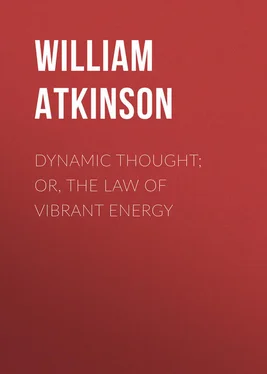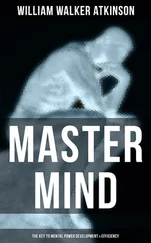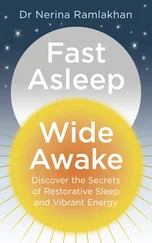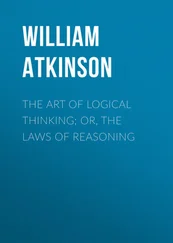William Atkinson - Dynamic Thought; Or, The Law of Vibrant Energy
Здесь есть возможность читать онлайн «William Atkinson - Dynamic Thought; Or, The Law of Vibrant Energy» — ознакомительный отрывок электронной книги совершенно бесплатно, а после прочтения отрывка купить полную версию. В некоторых случаях можно слушать аудио, скачать через торрент в формате fb2 и присутствует краткое содержание. Жанр: foreign_antique, foreign_prose, на английском языке. Описание произведения, (предисловие) а так же отзывы посетителей доступны на портале библиотеки ЛибКат.
- Название:Dynamic Thought; Or, The Law of Vibrant Energy
- Автор:
- Жанр:
- Год:неизвестен
- ISBN:нет данных
- Рейтинг книги:4 / 5. Голосов: 1
-
Избранное:Добавить в избранное
- Отзывы:
-
Ваша оценка:
- 80
- 1
- 2
- 3
- 4
- 5
Dynamic Thought; Or, The Law of Vibrant Energy: краткое содержание, описание и аннотация
Предлагаем к чтению аннотацию, описание, краткое содержание или предисловие (зависит от того, что написал сам автор книги «Dynamic Thought; Or, The Law of Vibrant Energy»). Если вы не нашли необходимую информацию о книге — напишите в комментариях, мы постараемся отыскать её.
Dynamic Thought; Or, The Law of Vibrant Energy — читать онлайн ознакомительный отрывок
Ниже представлен текст книги, разбитый по страницам. Система сохранения места последней прочитанной страницы, позволяет с удобством читать онлайн бесплатно книгу «Dynamic Thought; Or, The Law of Vibrant Energy», без необходимости каждый раз заново искать на чём Вы остановились. Поставьте закладку, и сможете в любой момент перейти на страницу, на которой закончили чтение.
Интервал:
Закладка:
Before leaving the subject of Mentation in plants, the writer is tempted to steal a little more space and tell you that plants do more than receive sensations of light and moisture. They exhibit rudimentary taste as well. Haeckel relates an interesting story of an insect-catching plant. He states that while it will bend its leaves when any solid body (excepting a raindrop) touches its surface, still it will secrete its acrid digestive fluid only when that object happens to be nitrogenous (meat or cheese). The plant is able to distinguish its meat diet (its food being insectivorous), and while it will supply its gastric juice for meat and cheese, as well as for the insect, it will not do so for other solids to which it is indifferent. He also mentions the fact that roots of trees and plants are able to taste the different qualities of soil, and will avoid poor soil and plunge into the richer parts of the earth. The sexual organism and life of plants also affords a great field for study to the student hunting for evidences of "life" and "Mentation" in that kingdom.
The motion or circulation of the sap in trees and plants was formerly considered to be due to capillary attraction and purely "mechanical laws," but recent scientific experiments have shown it to be a vital action – an evidence of life and Mentation – the experiments having proven that if the cell-substance of the plant was poisoned or paralyzed, the circulation of sap immediately ceased, although the "mechanical principles" had not been interfered with in the least.
And now on to the mineral kingdom. "What," you may cry, "Mind and Mentation in the mineral and chemical world – surely not?" Yes, even in these low planes may be found traces of mental action. There is Life everywhere – even there. And where there is Life there is Mind. Away back among the chemical principles, and the minerals we may go in our search for Life and Mind – they cannot escape us – even there!
CHAPTER IV
LIFE AND MIND AMONG THE ATOMS
TO the majority of persons the title of this chapter would seem an absurdity. Not to speak of Inorganic "Mind," the idea of "Life" in the Inorganic World would seem a ridiculous paradox to the "man on the street" who thinks of Substance as "dead," lifeless and inert. And, to tell the truth, even Science has held this view until a comparatively recent period, laughing to scorn the old Occult Teaching that the Universe is Alive, and capable of Thinking. But the recent discoveries of modern Science has changed all this, and we no longer hear Science speaking of "dead Matter" or "blind Force" – it recognizes that these terms are meaningless, and that the dreams of the old Occultists are coming true. Science confronts a live and thinking Universe. She is dazzled by the sight, and would shade her eyes, fearing to see that which she feels must present itself to her vision when her eyes become accustomed to the sight.
But a few daring minds among the scientific investigators are dreaming wonderful dreams to-day, and they tell us in broken tones of the wonderful visions that are passing before their sight. They dare not tell it all, for they fear the ridicule of their fellows. Their visions are of Life – Universal Life. In its investigations of the Material, Science has penetrated so far into the recesses of Things that its most advanced thinkers and investigators now find themselves standing in the presence of the Immaterial.
Science to-day is proclaiming the new doctrine – that is the same as the "old" doctrine of the Occultists – the doctrine of "Life Everywhere" – Life even in the hardest rock!
Before entering into our consideration of the evidence of Mentation in the Inorganic world, let us accustom ourselves to the idea of "something like Life" being found there. It will be better for us to approach the subject by easy stages. Where there is Life there must be Mind – so let us first look for evidences of Life.
The "man on the street" would require something more tangible than scientific explanations of "sensation," "attraction," etc. What can we offer him as an illustration? Let us see!
Suppose we call the attention of "the man" to the fact that metals get tired after considerable work without periods of rest. Science calls this the "fatigue of elasticity." When the metals are given rest, they recuperate and regain their former elasticity and health. "The man" may remember that his razor acts this way occasionally – and if he talks the matter over with his barber, his suspicions will be verified.
Then, if he consults a musician friend, he will be informed that tuning-forks also become tired, and lose their vibrating quality, until they are given a rest. Then his machinist friend will tell him that machinery in factories must be given a rest, occasionally, else it will begin to disintegrate and "die." Machinery will go on a strike for a rest, if it is overworked.
Then metals contract disease. Science informs us that zinc and tin have been infected, and the infection has spread from sheet to sheet crumbling the metal into powder – the spread of the infection resembling the spread of a plague among animals or plant-life. Science has experimented with copper and iron, and has found that these metals may be poisoned with chemicals, and will remain in a weakened condition until antidotes are administered. Window-glass workers declare that there is such a thing as "glass-disease," that will ruin fine stained glass windows unless the infected panes are removed. The "glass-disease" starts with one pane, and spreads gradually to the entire window, and from there to other windows.
Metallurgists have found that when metallic ores are put under certain forms of pressure, they seem to lose strength, and become weak until the pressure is removed.
Do these things mean anything to the "Man of the Street?"
Another step in the consideration of Life in the Inorganic world, is the realization of the fact that, after all, there is but the very finest line separating the higher forms of Mineral "life," from the lower forms of vegetable life, or the life of those "Things" which we may call either plants or animals. The "Life-line" is being pushed further back every day, by scientific investigation, and the "living" thing of today was the "inanimate" thing of yesterday. We hear much talk in the newspapers about some scientist, or another, "discovering life," or "creating life," in some "inanimate substance." Bless your hearts, you who are alarmed by these reports – no one can "create" life in anything, for it already exists there. The "discovery" is simply the realization of this fact.
Science, by means of the microscope, has brought to light forms of "living things," resembling in appearance the fine dust of inorganic minerals. These low forms of life exhibit but the simplest vital processes, the same very closely resembling chemical processes, although just a shade higher in the scale. Living creatures have been found which could be dried and laid aside like dust for several years, and then revived by being immersed in water, when they would resume their vital process as if they had been awakened from a sleep. Forms of life, called "Baccilli" have been discovered that can pass through degrees of heat and cold that can be expressed only by vague symbols or figures, the heat and cold being so intense that the unscientific mind cannot imagine it.
In appearance the "Diatoms" resemble the chemical crystals. These "Diatoms" are minute one-celled living "Things," having a hard but thin siliceous covering or shell, of extreme delicacy. They are what are known as "microscopic" creatures – that is, visible only through the microscope. Some of them are so small that it would take a thousand or more to cover the head of a pin. But, remember this – the microscope reveals them as "living creatures" performing vital functions. They are found in the deep waters of the ocean. To the naked eye they appear like fine sand or "dirt," but under the most powerful microscope, they are seen to comprise many species and varieties, exhibiting many peculiar shapes and forms – in fact, they have been called "living geometrical forms," their shapes and appearances almost exactly resembling those of the chemical and mineral crystals.
Читать дальшеИнтервал:
Закладка:
Похожие книги на «Dynamic Thought; Or, The Law of Vibrant Energy»
Представляем Вашему вниманию похожие книги на «Dynamic Thought; Or, The Law of Vibrant Energy» списком для выбора. Мы отобрали схожую по названию и смыслу литературу в надежде предоставить читателям больше вариантов отыскать новые, интересные, ещё непрочитанные произведения.
Обсуждение, отзывы о книге «Dynamic Thought; Or, The Law of Vibrant Energy» и просто собственные мнения читателей. Оставьте ваши комментарии, напишите, что Вы думаете о произведении, его смысле или главных героях. Укажите что конкретно понравилось, а что нет, и почему Вы так считаете.












